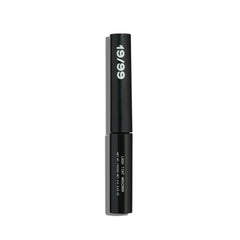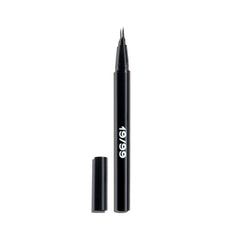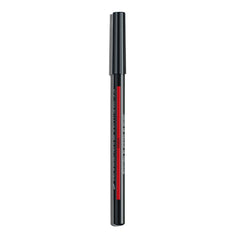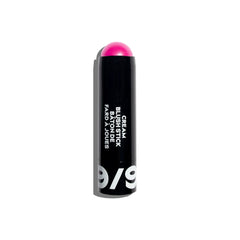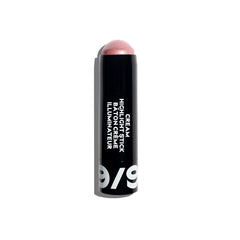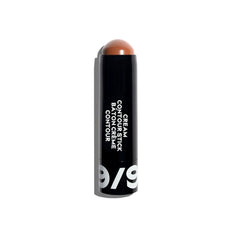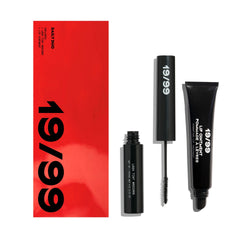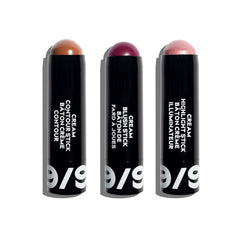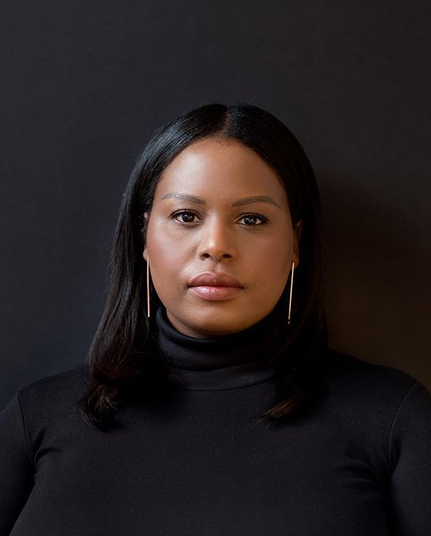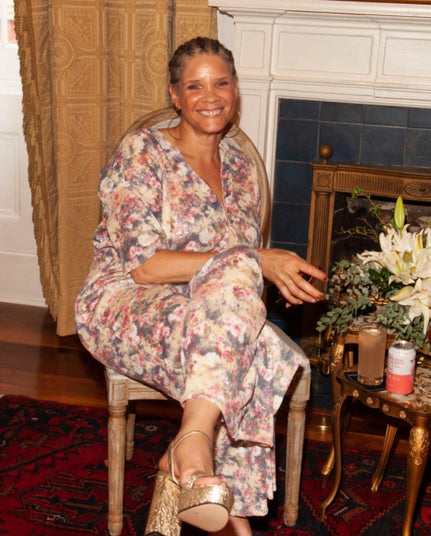
Michaela
Who I am and who I’ll beI was educated and encouraged to be multi-dimensional, and even though we didn’t have the word at the time, we were intersectional. We really saw the relationship between art, life, politics, justice, style and culture.
19/99 How did you get started in your career?
Michaela Angela Davis My training as an artist started early. I went to Duke Ellington School of the Arts in DC, where I trained in theatre, and was connected to the fashion department. This gave me a very dynamic education early that connected fashion, culture, literature, social studies, and social justice. In Washington DC at the time it was post-civil rights meets punk, meets hip-hop. It was a dynamic cultural time. I was educated and encouraged to be multi-dimensional, and even though we didn’t have the word at the time, we were intersectional. We really saw the relationship between art, life, politics, justice, style and culture. So that was my orientation before I even got to New York, where I moved when I was 17. I was fascinated by the dual life of theatre and fashion. I got into fashion more easily than theatre (there is a story to that) a lot of which has to do with race and identity, but in short, fashion was easier to for me to get into. I had an aunt who was a big fashion stylist that worked with Richard Avedon, and Hiro, so the fashion, image and narrative was in my DNA.
I became a fashion editor at Essence, which was great because it is all of it; fashion, race, feminism. It was a Black woman’s place, and there were no others. Meeting Susan Taylor, who was the Editor-in-Chief at the time, was really important to me, and she became my first official mentor. From Essence I became one of the founding editors of Vibe. When we launched Vibe it was the first time that a generation was able to define itself; what Rolling Stone was to rock ‘n’ roll, Vibe was to hip-hop culture. What we knew, that other people didn’t yet understand, was that hip-hop was an entire culture. It wasn’t only music, breakdancing, graffiti, and fashion, it was economy, language, it was a way of being in the world, it was an agency that Black American’s had never had; it was where we were really able to use our voices, our images, and our music.
Music has always been this aesthetic framework for Black American culture, and where we were able to “win” first; it was clear we were leaders in the world when it came to pop culture, particularly when it came to music. There was so much global reassurance. We were really able to define what a Black aesthetic in music was; whether it was gospel, jazz, hip-hop or field songs, it was clear there was some ownership and governance of one’s own culture through music. We have confidence in certain areas, music and literature, from James Baldwin to Toni Morrison, in terms of global reverence and respect. My hunger was to figure out how can we connect the culture, the pictorial, the language and make a complete space for one’s self, and magazines became that.
19/99 How has your voice evolved over the years, into that as an image activist?
MAD I found hip-hop could be really treacherous for women; it was very patriarchal, and had a lot of misogyny, it was very male and very male dominated. At times it was difficult. Joan Morgan’s When Chickenheads Come Home To Roost, is probably the best reference of what it meant to be Black and be a feminist and to be in hip-hop. As Editor-in-Chief at Honey, I saw there were certain kinds of women that were defining things; from Beyoncé and Lauryn Hill, Ciara, Gwen Stefani, there was an energy to those ‘90s to 2000s women, which was shaping what was going on. At Honey we understood that, and it was very hard to communicate this; the industry is very male, not just hip hop, but all of it, it is all very male…every little bit, beauty, everything. So, we weren’t only coming from this urban, hip-hop aesthetic but we were centering around women. My voice came from challenging what hip-hop was doing to women, particularly the narrow narrative with which Black women were being presented. When hip-hop first started to emerge, there was a plethora of voices, a lot of them women, and they were different, Salt-N-Pepa, Roxanne Shanté. As it got more and more profitable, the images being created were being pushed through the aesthetic of a 17-year-old boy. There was an erasure of women’s voices, which was astonishing, and it felt violent. All of a sudden we were all gone, and the only way you could have space was if you were Lil’ Kim or Foxy Brown. Both of whom I love, but Lil’ Kim in absence of Roxanne Shanté feels very different. Women’s voices and images of women got very narrow and some of us started to talk about it. We were being hypersexualized, and that was our PR into the world. I was hearing from young Black women on college campuses that they were studying aboard in Italy and everyone thinks they are a hoe because of these images. Even if you want to be a hoe, whatever that means to define yourself as, the understanding should not be that if you are a Black girl you were what they saw in the videos. So, activism started to happen on behalf of our image, and it was primarily challenging what was happening through the video world. I felt it was my responsibility to challenge it; I love hip-hop, these are my people, this is my culture, what are you doing to us? I found my voice in a way to give lots of other women a voice, particularly younger women. I had realized something that comes with independence; no one can really shut me down, or shut me up, or take my job, and that is the difference between me and someone who is just starting in their career. So, I feel a very deep sense of responsibility, even though a lot has changed since I started and women are making their way much quicker, which is all we’ve ever wanted. I didn’t even know I was dreaming of Instagram, but I was dreaming of something where women could have their own place, particularly women of colour, to create the images that they want to see in the world, without having to get permission from someone else; begging at Anna Wintour’s feet to please see me. People can create their own businesses.
 Photo via @michaelaangelad
Photo via @michaelaangelad
Growing up in fashion and art there are so many standards of beauty that I have had to shed and redefine.
 Photos via @michaelaangelad
Photos via @michaelaangelad
19/99 Take us through your beauty routine, morning and night.
MAD It is all about moisture and hydration. Not only am I in my fifties, I am also living in the desert, so everything is about a combination of hydration and moisture. In the morning the first thing is spritz with a rosewater & glycerin mist to wake my face up. I sleep with a humidifier. Right now I am using MILK’s Vegan Cleanser, which is really rich and emollient. Then use Rose Ingleton’s Calming Booster serum; I get a little flare up around my nose and eyes, and haven’t since I started using this serum. I am obsessed with UMA Oils. The brand is based in Ayurveda practices and I love that a woman of colour owns it. Their Absolute Anti Aging line, I had to get past the name, I love; it performs so highly and the packaging is so beautiful. I’ve had their Lip Oil for less then a month and already gone through it, I am liking it so much. I use Tata Harper’s Resurfacing Mask three times a week. That is kind of my routine: spritz then cleanse then serum then oil, and about three times throughout the day I will do use whatever hydrating mist I have on my face.
For my hair I’ve been using almost exclusively Pattern Beauty products. I do a co-wash, meaning a conditioning wash twice a week, and a shampoo wash once. I use Pattern’s Clarifying Shampoo and Intensive Conditioner. I have been using Gabrielle Union’s Flawless Deep Conditioning Masque once a week. And a mist – it is all about a mist, my hair gets very very hungry for hydration and so I will mist it with just water. Pattern has this amazing Mist Spray bottle, which has the perfect pressure, and distribution. I spend a lot of days with my hair just up in an afro puff. I also use jojoba oil in my hair at least once a day and if my hair is really dry then I’ll use Nutiva Coconut Oil, it is in a squeeze bottle which makes it much easier. Oh, and Felicia Leatherwood’s Detangler Brush is genius.
1999 How has your routine changed over the years?
MAD The biggest shift for me has been a different kind of investment in skin, and I’m not making the investment in the technology, it is more quality ingredients that are more pure and high end, so it’s not cheap. I have been using a lot more oils for the past 5 years or so. When you get to be my age, you realize it’s not about the creamy creams and the toners; it is about very real moisture because you are losing it, and you’ve got to put it back. Again, it is hydration and moisture, and you have to keep them both happening. I put oil and water on my face and hair multiple times a day. It is a water and oil situation; it is all about water and oil, everywhere; hair, skin, internally, vagina; you want to keep everything moisturized and radiant.
19/99 Do you play with makeup?
MAD Yes, I love makeup and love playing with it. I just don’t have the same need for it right now. I am currently a big fan of Milk. My daughter used to work them so she introduced me to the product. Why I like it so much is because you can really build with it, and what is really important to me is that my skin still feels radiant and vibrant. That requires a certain type of dewiness, and a lot of makeup that is marketed to older women doesn’t have that quality. Milk gives me this ability to add my colour in very subtle ways, and build it. I love their Hydro Grip Primer, it keeps your makeup on but you keep that glowly, radiant look. Radiant is the word; I want to look like I am warm from the inside out. I’ve been using their Kush Clear Brow Gel, and Kush Mascara. If I want to feel fancy I will use the Kush Lash Primer before my mascara and it makes me look like I have the lashes on.
I still use Becca; I feel like they were pioneers in the shimmer world, they got it right, and so there was still some of those little powders that I play with. The Lip Bar is my go-to lip, it was started by Melissa Butler, a young Black woman, and I love her so much. Their products just stay on all day, that is my go-to and I almost don’t vary from The Lip Bar on my lips. Edward Bess has beautiful eye shadow, for when I do a little eye situation. I am really looking forward to trying Pat McGrath’s new palettes; the packaging is so beautiful. I love it as an object, but the pigments too. They are so beautiful…that will be one of the things that I use to celebrate when I am back out into the world. I love makeup. What is so interesting is that some of the product marketed towards Millennials and Gen Z are actually really great for older people. For instance, Milk’s look like they could just be for models and cool kids, but my 82-year-old mother loves them. They are so light, you can put on as much or as little as you want. That is why having relationships with younger women is really important to me, because they will bring to me different stuff. That is why we have to have cross-generational conversations; we have to share the fun parts too. I think women that are older are kind of stuck with using old makeup or no makeup, and no makeup is no fun.
19/99 Do you feel pressure to look a certain way?
MAD Yes, but I feel a lot of that pressure is internally generated, and pressure doesn’t necessarily mean bad. Sometimes the pressure gives you a sense of strength, to go beyond what you would normally do – so I feel pressure but it doesn’t feel oppressive because it is internally generated. I want to really be an example to women behind me, that your sense of self and beauty and identity keeps going. So, the pressure is that I want to look vibrant, I want to look sexy as I define it, I want to look like I have agency and I take up space, and I am the space, and so part of that is there is a pressure. It is hard to look like you have agency if you are not well, it is hard to look like you have agency if you don’t look healthy, so I am aware of that and growing up in fashion and art there are so many standards of beauty that I have had to shed and redefine. So, if I want to feel that I am liberated, that I am really free, what does that look like? What does it look like to be a free woman of colour? So that is the pressure.
19/99 Does the term age appropriate mean anything to you?
MAD No
19/99 If you could share advice with your younger self, what would it be?
MAD Don’t be so hard on yourself. Oh my god, the inner dialogue was so brutal. The anxiety that happened between my ears was so much. It was such a waste because I was so fly, I was cute, cool, and snatched, and I was too hard on myself, and I missed it. It goes fast and I would have fired my internal self for most of that time.
19/99 What makes you feel beautiful?
MAD Telling the truth, I feel most beautiful when I am being the most honest. You need to have a lot of courage to really tell the truth, and as my courage grows, I believe so will my beauty.
19/99 Do you think there is a point when we stop growing and learning?
MAD No, to me that is the definition of dead when there is no more growth; that is it, it is over. When you cut off a flower from the root, it may be beautiful for a week, but then it is gone. That is really who I want to be in the world, and that is who my mother is, she gets up with just as much excitement about her day so I do with mine. I want to be that, until the last day. I want to grow and discover.
____________
Follow Michaela @michaelaangelad




